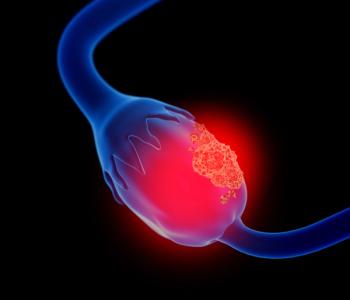
FCM, NGS, and PCR, Oh My! Detecting MRD in Patients With Acute Lymphoblastic Leukemia
Flow cytometry (FCM), next-generation sequencing, (NGS), and polymerase chain reaction (PCR) are the 3 most common methods clinicians use to diagnose minimal residual disease (MRD) in patients with acute lymphoblastic leukemia who have undergone chemotherapy, radiotherapy, or immunotherapy. MRD can be found both in bone marrow via aspiration and peripheral blood circulation through a draw.
The International Journal of Molecular Sciences recently published review
Flow cytometry (FCM), next-generation sequencing (NGS), and polymerase chain reaction (PCR) are the 3 most common methods clinicians used to diagnose MRD in patients with ALL who have undergone chemotherapy, radiotherapy, or immunotherapy, by using phenotypic markers or differential gene patterns.1 MRD can be found both in bone marrow via aspiration and peripheral blood circulation through a draw.2
MRD serves several important functions. Clinicians use this prognostic marker to evaluate response to treatment, predict the likelihood of relapse, and identify if a patient is in remission or suffering a relapse. However, the type of testing depends on the blood cancer, which, in addition to ALL, can be chronic lymphocytic leukemia, chronic myeloid leukemia, lymphoma, or myeloma.1
The sensitivity of a test dictates its effectiveness at detecting MRD,2 and the primary outcome is the MRD cellular level. The cutoff level is 0.01% MRD cells (10—4), or 1 MRD cell per 10,000 cells.1 Measurements above this indicate a higher risk of relapse compared with results below 0.01%, and as the numbers increase (eg, MRD >1%), so does the risk of relapse—while chances of survival drop.1
Flow Cytomtery
FCM has progressed from using 2- and 3-color flow
Polymerase Chain Reaction
The 2 main methods of PCR used to measure MRD are real-time quantitative PCR and reverse transcription PCR. Peripheral blood can be used, but the MRD levels would be 10 times lower compared with bone marrow. To detect MRD, PCR requires 106 cells obtained via bone marrow aspiration, and it reaches a general sensitivity of 0.001%. It has a one-log-higher
Next-Generation Sequencing
NGS is considered more accurate at detecting MRD and can lessen the chances of MRD going undetected. It is also easier to complete in several hours than PCR and FCM, because the process is so automated. But while it can detect MRD cells below 10—5 (<0.001%), its limit is 10—7, which requires large bone marrow samples.1
Together, these 3 methods help to determine patient outcomes, good or bad, and clinicians can direct treatment strategies based on those results.
“Current diagnostic tools are now complemented by improved sequencing technologies and NGS and are increasingly available in clinics providing cellular identification capacities of 10—7. PCR and FCM are the standard methods for MRD analyses; however, in the future, it will be important to follow how NGS platforms become more relevant in clinical diagnostics due to the sensitive cell quantification levels these platforms can provide,” the investigators concluded.
References
1. Kruse A, Abdel-Azim N, Kim HN, et al. Minimal residual disease detection in acute lymphoblastic leukemia. Int J Mol Sci. 2020;21(3). doi: 10.3390/ijms21031054.
2. Leukemia & Lymphoma Society. Minimal residual disease. LLS website. lls.org/sites/default/files/National/USA/Pdf/Publications/FS35_MRD_Final_2019.pdf. Published 2019. Accessed February 13, 2020.
Newsletter
Stay ahead of policy, cost, and value—subscribe to AJMC for expert insights at the intersection of clinical care and health economics.







































